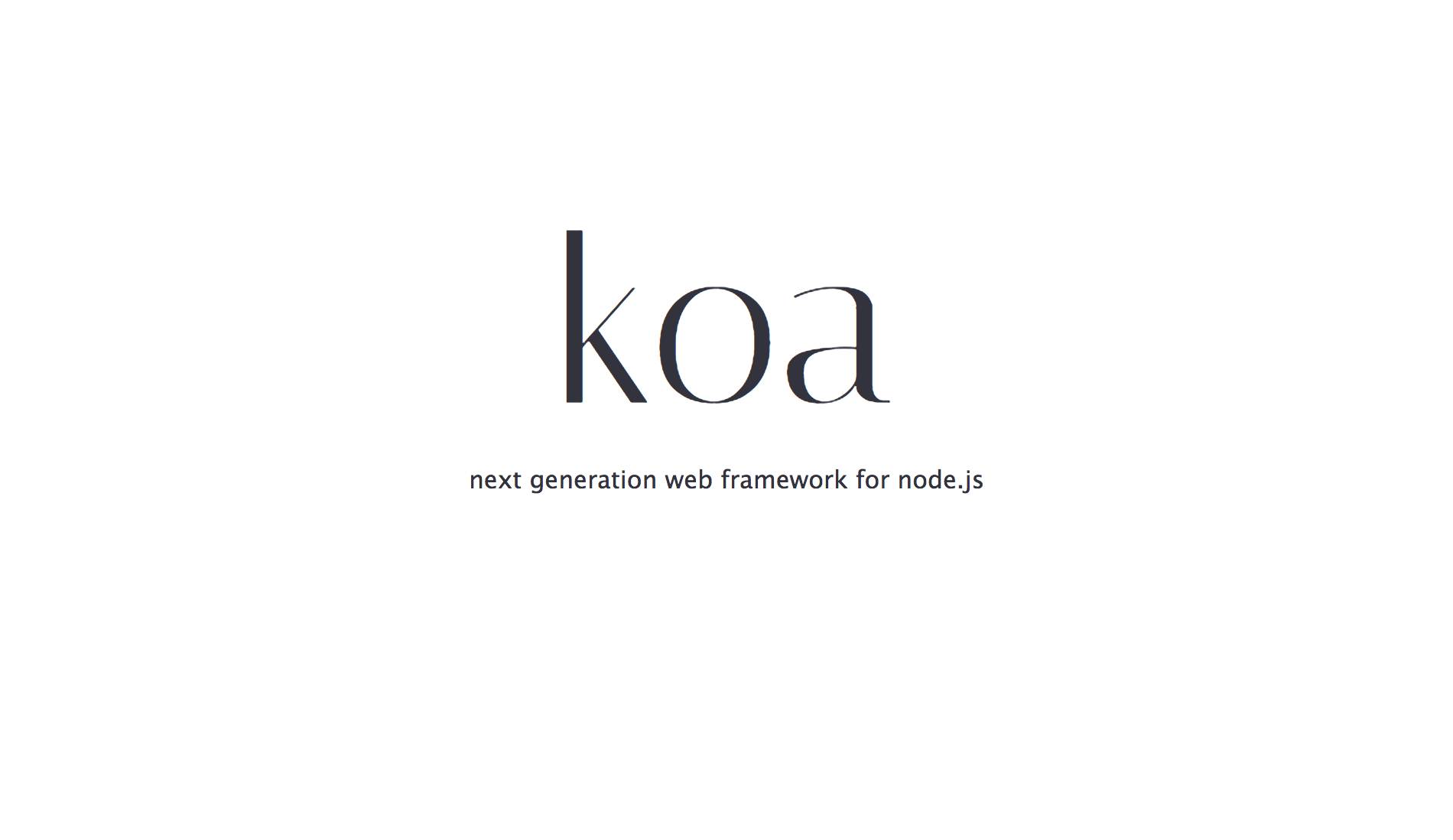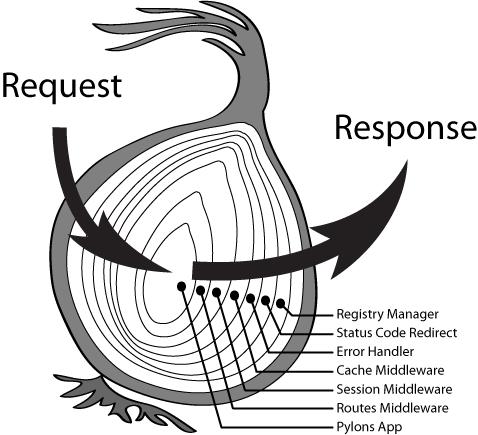Koa快速入门教程
Posted JavaScript之禅
tags:
篇首语:本文由小常识网(cha138.com)小编为大家整理,主要介绍了Koa快速入门教程相关的知识,希望对你有一定的参考价值。

Koa 是由 Express 原班人马打造的,致力于成为一个更小、更富有表现力、更健壮的 Web 框架,采用了
async和await的方式执行异步操作。
Koa有v1.0与v2.0两个版本,随着node对 async和 await的支持,Koa2的正式发布,本文Koa均指Koa2
如果你还不熟悉 async函数可查阅阮大的ECMAScript 6 入门
这是一篇从零开始的简易教程,话不多说,先来快速开始:hello world!
一、快速开始
1.1 开发环境
Koa 依赖 node v7.6.0 或 ES2015及更高版本和 async 方法支持,你可以使用自己喜欢的版本管理器快速安装支持的 node 版本
$ node -v
v8.9.1
如果你的版本号小于v7.6.0,请自行升级。如使用nvm
在确认好环境后,我们就可以新建一个项目,在里面自由操练了
$ mkdir KoaTutorial && cd KoaTutorial
$ npm i koa --save
1.2 必修的 hello world 应用:
const Koa = require('koa');
const app = new Koa();
app.use(async ctx => {
ctx.body = 'Hello World';
});
app.listen(3000);
打开浏览器,访问 http://localhost:3000/,你会看到那可爱的 HelloWorld。就是这么简单的几行代码,我们就起了一个HTTP服务,
来来看看这个hello world程序,其中前两行和后一行是架设一个 HTTP 服务。中间的则是对用户访问的处理。 ctx则是Koa所提供的 Context对象(上下文), ctx.body=则是 ctx.response.body=的alias(别名),这是响应体设置的API。
1.3 Context 对象
Koa Context 将 node 的 request 和 response 对象封装到单个对象中,为编写 Web 应用程序和 API 提供了许多有用的方法。上例的 ctx.body=''即是发送给用户内容,它是 ctx.response.body的简写(更多请查阅官网)。 ctx.response代表 HTTP Response。 ctx.request代表 HTTP Request。
二、路由(URL处理)
2.1 手动实现简易路由
koa是个极简的web框架,简单到连路由模块都没有配备,我们先来可以根据 ctx.request.url或者 ctx.request.path获取用户请求的路径,来实现简单的路由。
const Koa = require('koa');
const app = new Koa();
app.use(async ctx => {
let _html = '404 NotFound'
switch (ctx.url) {
case '/':
_html = '<h1>Index</h1>';
break;
case '/adout':
_html = '<h1>About</h1>';
break;
case '/hello':
_html = '<h1>world</h1>';
break;
default:
break;
}
ctx.body = _html;
});
app.listen(3000);
运行这段代码,访问http://localhost:3000/hello将看见world,访问http://localhost:3000/about将看见返回about,访问http://localhost:3000将看见Index。是不是很有成就感…但是这也太麻烦了吧。如果依靠 ctx.request.url去手动处理路由,将会写很多代码,这时候就需要对应的路由中间件来对路由进行控制: koa-router
2.2 使用koa-router中间件
下载并引入koa-router
npm i koa-router --save
const Koa = require('koa');
const Router = require('koa-router');
const app = new Koa();
const router = new Router();
router.get('/', async (ctx) => {
let html = `
<ul>
<li><a href="/hello">helloworld</a></li>
<li><a href="/about">about</a></li>
</ul>
`
ctx.body = html
}).get('/hello', async (ctx) => {
ctx.body = 'helloworld'
}).get('/about', async (ctx) => {
ctx.body = 'about'
})
app.use(router.routes(), router.allowedMethods())
app.listen(3000);
运行这个 demo,我们将看到与上栗一样的效果。在这儿我们使用到了第三方中间件。
三、中间件
Koa 的最大特色,也是最重要的一个设计,就是中间件(middleware)Koa 应用程序是一个包含一组中间件函数的对象,它是按照类似堆栈的方式组织和执行的。Koa中使用 app.use()用来加载中间件,基本上Koa 所有的功能都是通过中间件实现的。每个中间件默认接受两个参数,第一个参数是 Context 对象,第二个参数是 next函数。只要调用 next函数,就可以把执行权转交给下一个中间件。
下图为经典的Koa洋葱模型

我们来运行Koa官网这个小例子:
const Koa = require('koa');
const app = new Koa();
// x-response-time
app.use(async (ctx, next) => {
const start = Date.now();
await next();
const ms = Date.now() - start;
ctx.set('X-Response-Time', `${ms}ms`);
});
// logger
app.use(async (ctx, next) => {
const start = Date.now();
await next();
const ms = Date.now() - start;
console.log(`${ctx.method} ${ctx.url} - ${ms}`);
});
// response
app.use(async ctx => {
ctx.body = 'Hello World';
});
app.listen(3000);
上面的执行顺序就是:请求 ==> x-response-time中间件 ==> logger中间件 ==> 响应中间件 ==> logger中间件 ==> response-time中间件 ==> 响应。 通过这个顺序我们可以发现这是个栈结构以"先进后出"(first-in-last-out)的顺序执行。Koa已经有了很多好用的中间件(https://github.com/koajs/koa/wiki#middleware)你需要的常用功能基本上都有人实现了
四、模板引擎
在实际开发中,返回给用户的网页往往都写成模板文件。 Koa 先读取模板文件,然后将这个模板返回给用户,这事我们就需要使用模板引擎了,关于Koa的模版引擎,我们只需要安装koa模板使用中间件koa-views 然后在下载你喜欢的模板引擎(支持列表)便可以愉快的使用了。如安装使用ejs
# 安装koa模板使用中间件
$ npm i --save koa-views
# 安装ejs模板引擎
$ npm i --save ejs
const Koa = require('koa')
const views = require('koa-views')
const path = require('path')
const app = new Koa()
// 加载模板引擎
app.use(views(path.join(__dirname, './view'), {
extension: 'ejs'
}))
app.use(async (ctx) => {
let title = 'Koa2'
await ctx.render('index', {
title,
})
})
app.listen(3000)
./view/index.ejs 模板
<!DOCTYPE html>
<html>
<head>
<title><%= title %></title>
</head>
<body>
<h1><%= title %></h1>
<p>EJS Welcome to <%= title %></p>
</body>
</html>
打开http://localhost:3000/,你将看到返回了页面:
关于ejs语法请访问ejs官网学习:https://github.com/mde/ejs
五、静态资源服务器
网站一般都提供静态资源(图片、字体、样式表、脚本……),我们可以自己实现一个静态资源服务器,但这没必要,koa-static模块封装了这部分功能。
$ npm i --save koa-static
const Koa = require('koa')
const path = require('path')
const static = require('koa-static')
const app = new Koa()
// 静态资源目录对于相对入口文件index.js的路径
const staticPath = './static'
app.use(static(
path.join(__dirname, staticPath)
))
app.use(async (ctx) => {
ctx.body = 'hello world'
})
app.listen(3000)
我们访问http://localhost:3000/css/app.css 将返回 app.css 的内容,访问http://localhost:3000/koa2.png我们将看见返回下图
六、请求数据的获取
前文我们主要都在处理数据的响应,这儿我们来了解下Koa获取请求数据,主要为 GET和 POST方式。
6.1 GET请求参数的获取
在koa中,获取GET请求数据源头是koa中request对象中的query方法或querystring方法,query返回是格式化好的参数对象,querystring返回的是请求字符串。
请求对象ctx.query(或ctx.request.query),返回如 { a:1, b:2 }
请求字符串 ctx.querystring(或ctx.request.querystring),返回如 a=1&b=2
const Koa = require('koa')
const app = new Koa()
app.use( async ( ctx ) => {
const url = ctx.url
const query = ctx.query
const querystring = ctx.querystring
ctx.body = {
url,
query,
querystring
}
})
app.listen(3000)
运行程序并访问http://localhost:3000/?page=2&limit=10,我们将得到如下结果
{"url":"/?page=2&limit=10","query":{"page":"2","limit":"10"},"querystring":"page=2&limit=10"}
对了,在这儿推荐个插件:JSONView,用了它你将得到格式化json数据,如下:
{
url: "/?page=2&limit=10",
query: {
page: "2",
limit: "10"
},
querystring: "page=2&limit=10"
}
更多Koa Request API 请查看http://koajs.com/#request
6.2 POST请求数据获取
对于POST请求的处理,koa2没有封装获取参数的方法,需要通过自己解析上下文context中的原生node.js请求对象req,将POST表单数据解析成querystring(例如: a=1&b=2&c=3),再将querystring 解析成JSON格式(例如: {"a":"1","b":"2","c":"3"}),我们来直接使用koa-bodyparser 模块从 POST 请求的数据体里面提取键值对。
const Koa = require('koa')
const app = new Koa()
const bodyParser = require('koa-bodyparser')
// 使用koa-bodyparser中间件
app.use(bodyParser())
app.use(async (ctx) => {
if (ctx.url === '/' && ctx.method === 'GET') {
// 当GET请求时候返回表单页面
let html = `
<h1>koa-bodyparser</h1>
<form method="POST" action="/">
Name:<input name="name" /><br/>
Age:<input name="age" /><br/>
<button type="submit">submit</button>
</form>
`
ctx.body = html
} else if (ctx.url === '/' && ctx.method === 'POST') {
// 当POST请求的时候,中间件koa-bodyparser解析POST表单里的数据,并显示出来
ctx.body = ctx.request.body
} else {
// 404
ctx.body = '<h1>404 Not Found</h1>'
}
})
app.listen(3000)
运行程序,填写并提交表单,请求结果为:
{
name: "ogilhinn",
age: "120",
email: "ogilhinn@gmail.com"
}
关于更多的Koa知识快打开搜索引擎搜索()继续学习吧,后续将继续数据库的操作以及实现一个简单的小案例。
参考链接
Koa官网
Koa进阶学习笔记
Koa 框架教程
Koa wiki
以上是关于Koa快速入门教程的主要内容,如果未能解决你的问题,请参考以下文章